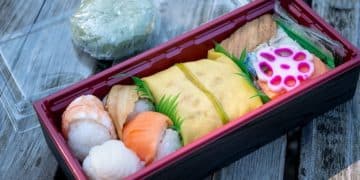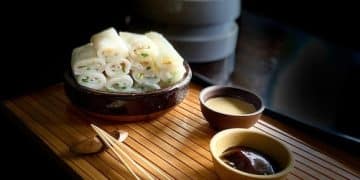Indulge in Japanese Drama Food Culture: Recreating Delicious Dishes
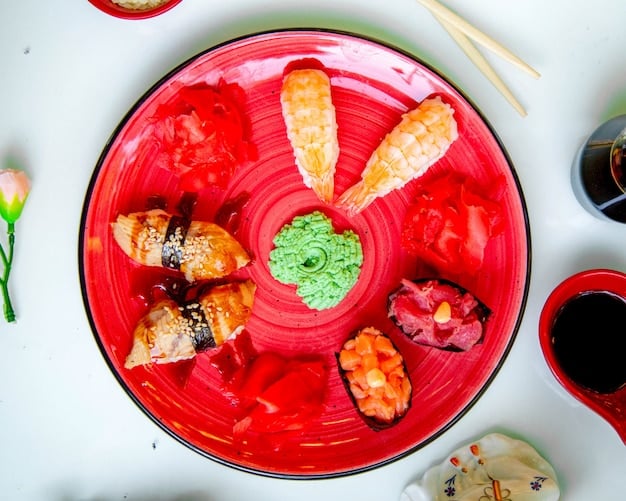
Japanese Drama Food Culture: Recreating Delicious Dishes from Your Favorite Shows explores the captivating role of food in Japanese dramas and offers inspiration for recreating these iconic dishes at home.
Japanese dramas, or J-dramas, have captivated audiences worldwide with their compelling storylines, unique characters, and, perhaps surprisingly, their mouthwatering portrayals of food. Exploring Japanese Drama Food Culture: Recreating Delicious Dishes from Your Favorite Shows offers a delicious adventure for fans looking to immerse themselves further into their favorite series.
The Allure of Food in Japanese Dramas
Food in Japanese dramas is more than just sustenance; it’s a storyteller. From heartwarming family meals to symbolic snacks, food serves to deepen character relationships, highlight cultural nuances, and even drive the plot forward. The attention to detail in depicting these culinary moments is one reason why J-dramas resonate so deeply with viewers.
Food as a Reflection of Character
Often, the food a character chooses or prepares reflects their personality, background, and emotional state. A meticulous character might be shown carefully crafting a perfect bento box, while a more laid-back individual might be content with a simple bowl of ramen.
Culinary Diplomacy: Food and Relationships
Sharing a meal is a common way to build relationships in J-dramas. Whether it’s a family gathering around a pot of nabe or a tentative first date over sushi, food is often the catalyst for connection and understanding.
- The act of preparing and sharing food demonstrates care and affection.
- Specific dishes can trigger memories and emotions, adding layers to relationships.
- Food rituals, like saying “itadakimasu” before a meal, emphasize respect and gratitude.
The portrayal of food goes beyond mere aesthetics. Careful attention is paid to the sounds of cooking, the textures of ingredients, and the expressions of those enjoying the meal. This sensory experience draws viewers into the scene, making the food seem even more appealing.
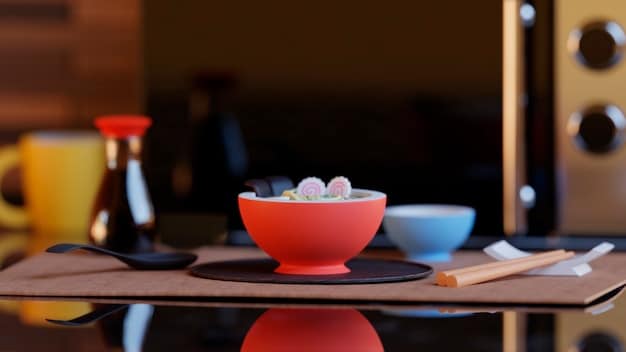
Iconic Dishes Featured in J-Dramas
Certain Japanese dishes appear repeatedly in dramas, becoming almost synonymous with the genre. These dishes often evoke feelings of comfort, nostalgia, and connection to Japanese culture.
Ramen: A Staple of Comfort and Connection
Ramen is arguably the most iconic dish in J-dramas. Whether it’s a quick meal at a bustling ramen shop or a homemade bowl shared between loved ones, ramen represents comfort, warmth, and shared experiences.
Bento Boxes: Expressions of Love and Care
The humble bento box transforms into an art form in many dramas. Mothers, wives, or even love interests meticulously arrange rice, vegetables, and proteins into visually appealing and nutritious meals, expressing their affection through food.
Other Notable Dishes
- **Takoyaki:** These savory octopus balls are a popular street food often enjoyed at festivals or gatherings.
- **Onigiri:** Simple rice balls, often filled with pickled plum or tuna mayo, are a convenient and comforting snack.
- **Sushi:** From elegant omakase to casual temaki, sushi represents sophistication and celebration.
These dishes are not just props; they are integral parts of the narrative, symbolizing different aspects of Japanese life and culture. Recreating these dishes allows fans to connect with their favorite dramas on a deeper level.
Essential Ingredients for Recreating J-Drama Dishes
Embarking on a culinary journey inspired by your favorite J-dramas starts with gathering the right ingredients. While some ingredients might require a trip to a specialty store, many can be found at your local supermarket.
Pantry Staples
Several ingredients form the foundation of Japanese cooking. Stocking your pantry with these essentials will make recreating J-drama dishes much easier.
Fresh Produce
Fresh vegetables and herbs play a crucial role in Japanese cuisine, adding flavor, texture, and visual appeal to dishes.
- **Napa Cabbage:** Used extensively in nabe and stir-fries.
- **Scallions:** A versatile garnish and flavoring agent.
- **Ginger:** Adds a warm, spicy note to sauces and marinades.
- **Shiitake Mushrooms:** Prized for their umami flavor and meaty texture.
Having these ingredients on hand will allow you to recreate a wide range of J-drama inspired dishes. Remember to prioritize freshness and quality for the best results. Also, don’t be afraid to experiment with substitutions if certain ingredients are difficult to find.
Step-by-Step Guides to Popular J-Drama Recipes
Now that you have the essential ingredients, it’s time to start cooking! Here are step-by-step guides to recreating some of the most popular and recognizable dishes from Japanese dramas.
Ramen: The Ultimate Comfort Food
Making ramen from scratch can be a labor of love, but the result is well worth the effort. This guide will walk you through each step, from preparing the broth to assembling the final bowl.
1. **Prepare the Broth:** Simmer chicken or pork bones with aromatics like ginger, garlic, and scallions for several hours to create a rich, flavorful broth.
2. **Cook the Noodles:** Use fresh ramen noodles if possible, and cook according to package directions.
3. **Prepare the Toppings:** Slice pork belly (chashu), soft-boil eggs, and prepare other toppings like seaweed, bamboo shoots, and scallions.
4. **Assemble the Ramen:** Add the noodles to the broth, arrange the toppings artfully, and serve immediately.
Bento Box Basics: A Guide to Packing Perfection
Creating a beautiful and nutritious bento box is easier than you might think. Follow these tips for a bento box that would make any J-drama character proud:
- **Start with Rice:** Use Japanese short-grain rice for the best texture and flavor.
- **Add a Protein:** Choose from grilled chicken, fish, or tofu.
- **Include Vegetables:** Pack a variety of colorful vegetables like broccoli, carrots, and edamame.
- **Add a Pickled Item:** Pickled plums (umeboshi) or ginger add a tangy and refreshing element.
With a little practice, you’ll be creating bento boxes that are both delicious and visually stunning, just like the ones you see in your favorite J-dramas.
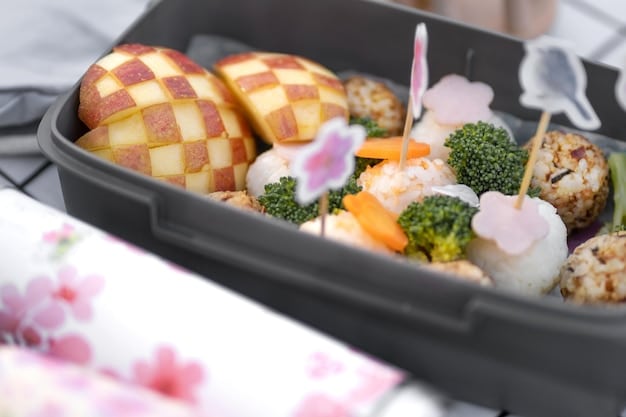
Tips for Authenticity and Presentation
To truly capture the essence of J-drama food culture, paying attention to authenticity and presentation is key. These tips will help you elevate your recreations to the next level.
Sourcing Authentic Ingredients
While substitutions are sometimes necessary, using authentic Japanese ingredients can significantly enhance the flavor and experience of your dishes.
Mastering Japanese Cooking Techniques
Understanding basic Japanese cooking techniques can make a big difference in the outcome of your dishes. Techniques like dashi-making, tempura frying, and sushi rolling require practice but are well worth the effort.
Presentation is Key
- **Use Japanese Tableware:** Invest in a few key pieces of Japanese tableware, like bowls, plates, and chopsticks, to enhance the presentation.
- **Pay Attention to Detail:** Take the time to arrange your food artfully, even if it’s just a simple bowl of ramen.
- **Garnish Generously:** Fresh herbs, sesame seeds, and seaweed flakes can add visual appeal and flavor.
By focusing on authenticity and presentation, you can create dishes that not only taste delicious but also transport you to the world of your favorite J-dramas.
Beyond the Recipes: Exploring Food Culture through Dramas
Watching Japanese dramas is a great way to learn about Japanese food culture. From the etiquette of dining to the significance of seasonal ingredients, J-dramas offer a window into the traditions and values surrounding food in Japan.
Dining Etiquette
J-dramas often showcase proper dining etiquette, such as using chopsticks correctly, holding your bowl while eating, and saying “itadakimasu” before a meal. Observing these customs can enhance your appreciation of Japanese culture.
1. **Chopstick Etiquette:** Avoid sticking chopsticks upright in a bowl of rice, as this resembles a funeral ritual.
2. **Expressing Gratitude:** Saying “gochisosama deshita” after a meal is a polite way to thank the host or chef.
3. **Avoiding Waste:** It’s considered good manners to finish all the food on your plate.
The Significance of Seasonal Ingredients
Japanese cuisine places a strong emphasis on seasonal ingredients, known as “shun.” J-dramas often highlight the use of these ingredients, showcasing the unique flavors and textures of each season.
### Food as a Symbol of Community
Whether it’s a large family dinner or a group of friends sharing a meal, Japanese dramas often portray food as a central element of community and togetherness. These scenes highlight the importance of sharing and connection in Japanese society.
| Key Aspect | Brief Description |
|---|---|
| 🍜 Ramen | Iconic comfort food; often symbolizes connection and warmth. |
| 🍱 Bento Boxes | Expressions of love and care; represent meticulous preparation. |
| 🥢 Dining Etiquette | Highlights respect and gratitude in Japanese culture. |
| 🌱 Seasonal Ingredients | Emphasizes the use of “shun,” showcasing unique flavors. |
Frequently Asked Questions
What are some common ingredients in Japanese drama food?
▼
Common ingredients include soy sauce, mirin, dashi, rice vinegar, miso, sesame oil, and nori seaweed. These ingredients form the base of many dishes seen in J-dramas.
Why is ramen so popular in Japanese dramas?
▼
Ramen is a quick, affordable, and comforting meal often enjoyed in social settings, making it a frequent feature for character interactions in Japanese dramas.
How important is presentation in Japanese cuisine?
▼
Presentation is highly regarded in Japanese cuisine, emphasizing the care put into preparing the food and enhancing the overall dining experience depicted in the dramas.
Can I substitute ingredients if I can’t find authentic Japanese ones?
▼
Yes, you can substitute ingredients. For example, if you can’t find dashi, you can use vegetable broth. Experiment and adjust according to your taste preferences.
What’s the significance of bento boxes in J-dramas?
▼
Bento boxes often symbolize love, care, and attention, made with a variety of food, meticulously displayed inside for their beloved ones.
